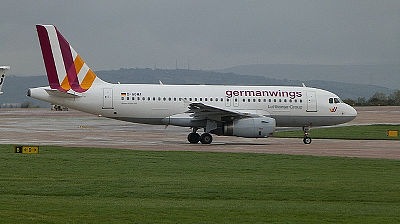Similarities of the crash that occurred twice in 5 months in 'Boeing 737 MAX 8'

by Gusti Fikri Izzudin Noor
On March 10, 2019 (Sunday), Ethiopian Airlines 302, which took off from Bole International Airport near the capital of Ethiopia, Addis Ababa, crashed , killing all 157 crew members and passengers. The "Boeing 737 MAX 8" used in this flight was also used in the October 2016 Lion Air 610 crash in Indonesia. The travel news site The Points Guy notes that there are some similarities between the two accidents that occurred in just five months, including the fact that the aircraft was the same.
Striking Similarities Between Lion Air and Ethiopian Crashes
https://thepointsguy.com/news/similarities-lion-air-ethiopian-737-max-crashes/

・ The same thing happened in the operating aircraft <br> more than anything else, the two accidents were operating on the same "Boeing 737 MAX 8".
This equipment belongs to the 4th generation "Boeing 737 MAX" family of the "Boeing 737" series manufactured by Boeing. The family includes the MAX 7 smaller than the MAX 8 and the MAX 200 with the MAX 8 seating capacity increased to 200, and the MAX 9 and MAX 10 larger than the MAX 8.
The "Boeing 737 MAX" was launched in August 2011 in response to the Airbus, which is its rival, announced the A320neo in December 2010 and was well received. We have received orders for over 4,000 aircraft by 2018, and have been delivered since 2017. The number of aircraft delivered by January 2019 is 350.
The Boeing 787, which has been in operation since 2011, has delivered more than twice the number of aircraft, and while there have been many problems with equipment, including battery problems, there has been no crash.

by Jetstar Airways
・ Accident is happening at takeoff. <br> Because aviation accidents are concentrated at takeoff and landing so that it is called "11 minutes of magic", "3 minutes of takeoff, 8 minutes of landing" in the aviation industry in the first place, this is It is not an uncommon match, but both accidents occurred at takeoff.
The Lion Air 610 crashed 13 minutes after takeoff, and the Ethiopian Airlines flight 302 disappeared from the radar 6 minutes after takeoff.
・ The lift at takeoff may have failed. <br> Lion Air's accident showed that the nose-down operation was performed 24 times or more in 13 minutes after takeoff by black box analysis. You The operation is believed to be due to a "stall prevention system", and the system was designed to operate even during manual maneuvers that are not autopilots. Presumably because of a defect in the elevation sensor or something, the system is activated by misinterpreting the normal rise at takeoff as "dangerous". Every time the pilot raised the nose, the system would be activated again and again. The post-accident investigation pointed out that the Boeing 737 MAX 8 crew manual did not mention the anti-stall system.
Although it is still unclear whether this anti-stall system affected the Ethiopian Airlines accident, it is known from the flight records of the flight that the altitude rise after takeoff was not successful, and both of the two accidents There is a possibility that something went wrong with the rise during takeoff.
Additional data from Flight radar 24 ADS-B network show that vertical speed was unstable after take off.
— Flightradar24 (@ flightradar24) March 10, 2019
Take off 05: 38: 18 UTC
Last position received by FR24 at 05:41:02 UTC
Note That Addis Please Ababa Airport Is Located At 7,625 Feet AMSL. Pic.Twitter.Com/Uyvfp1x9Xb
・ The first flight of the day <br> Regardless of the cause of the accident , the flight of Lion Air 601 is 6:20 am on separate lands, and the flight 302 of Ethiopia Airlines is on separate lands at 8:38 am It was my first flight on the day.
However, the situation before that was different between the two aircraft, while the Lion Air was after one night in Jakarta, while the Ethiopian aircraft had just arrived 2-3 hours before the accident on a flight from Johannesburg.
・ The weather is irrelevant <br> The accident may be caused by lightning strikes or snow on the aircraft, but the weather at the time of the accident of the Lion Air 601 is fine and the wind is weak and the visibility is good, the accident encounter of the Ethiopian Airlines 302 It is known that the clouds were well visible at a time when they were scattered.
Related Posts:
in Vehicle, Posted by logc_nt







